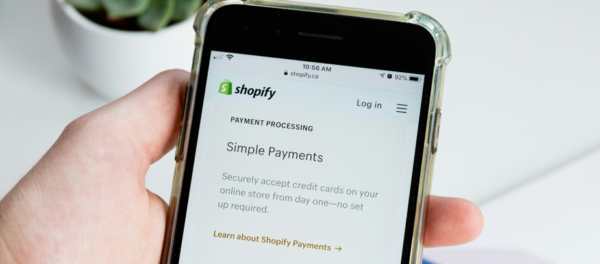The Campaign Reangle: How to reuse digital PR content to secure further results
Producing a digital PR campaign often involves a lot of spinning plates.
Before producing content, there’s identifying the client’s audience and their interest, brainstorming ideas, competitor research and finding ways to integrate your client’s key pages.
From ideation, to content creation and media prospecting, as well as facilitating internal and external sign-off processes, the journey to promoting a campaign to your target media contacts can often involve multiple hurdles first.
In order to maximise the content your digital PR team creates, reangling campaigns is a tactic worth considering. The approach essentially involves refreshing or transforming existing content – which could involve a press release, a blog post, data findings or expert commentary.
Tip: Making sure you choose an ‘evergreen’ content idea or topic will help you to reangle your campaign further down the line.
Reusing existing campaigns will help you save time, enable you to be reactive and to continue placing your client front and centre of a conversation they’ve taken part in before by leveraging their authority on that topic.
Ultimately, the aim here is to have another tool in your arsenal that helps ensure continued success in your digital PR efforts. Whether your KPIs are link acquisition, organic visibility, brand awareness or social engagement.
When to consider reangling a digital PR campaign
There are three key situations when reangling a digital PR campaign may be a viable next step:
- Your initial outreach had less momentum than you were expecting
- Previous content becomes relevant again and/or an awareness day (a.k.a reactive!)
- You’re looking for some quick results
1. Your initial outreach had less momentum than you were expecting
You’ve been back and forth with the client ensuring their positioning in the piece is as good as it can be to reflect their SEO efforts. You’ve gathered all of the relevant data and packaged it into a newsworthy press release ready for outreach.You’ve pressed send, and what you were dreading ensues… the tumbleweeds. No coverage. This is not something to be ashamed of, it’s a common occurrence across the industry.
According to Aira’s 2021 State of Link Building Report, 31% of respondents admitted that they’d run campaigns in the last 12 months that had generated zero links.
Pinpointing exactly why a campaign hasn’t landed could very well be a blog post topic in itself. There are a wide range of factors to consider, from the media list and the outreach pitch, to timing, relevancy and the content itself.
If you’ve reviewed these factors and remain confident that the essence of your content is strong, the appropriate next step may be a campaign reangle.
Now what?
Reangling a campaign can involve multiple steps.
Think about what other target publications and niches your content may appeal to. Take a step back and brainstorm:
- Who would talk about this story with their colleagues or friends?
- Who is impacted by this story?
- What stakeholders have you failed to consider so far?
Once you’ve identified a new niche to target, tweak your press release structure and pitch accordingly.
This could be as simple as rephrasing the headline or subject line. Have a look at your target websites and alter your heading accordingly so it mirrors their house tone and style.
A little bit of extra research can go a long way to increase your chances of engagement with your targets. Are there any hot topics in the niche that link to your story and will add relevancy to your pitch?
If your campaign would benefit from further transformation, you could add additional data to enhance its value or create new visuals to accompany the content. We want to provide journalists with all the assets they could need to publish the story.
2. Previous content becomes relevant again and/or an awareness day (reactive!)
With similar news cycles often repeating and fresh media trends popping up constantly, it’s only a matter of time before one of your campaigns may become relevant again.
This technique is often referred to as reactive PR: content that reacts to a particular news story or topic that is being discussed.
The key to being reactive is speed. What is relevant one day may become stale by the next.
To ensure you stay on top of potential opportunities, read the news everyday, set up Google Alerts for keywords relating to your client/brand, monitor #journorequests on Twitter and keep a calendar of seasonal events.
Sometimes the connection between your content and the circulating story may be obvious, but sometimes it may take some thinking outside the box. What can your data or expert commentary add to the current conversation?
Pitch your existing content to journalists as quickly as possible to provide them with what they need whilst it’s still relevant.
For example, if your client is a family lawyer and you’ve got existing commentary from a previous campaign on the topic of divorce, or data on divorce rates, keep an eye out for celebrity divorce announcements. When journalists start engaging with divorce as a topic, you can provide them with valuable expertise and data for their story.
3. You’re looking for some quick results
As mentioned, investing in a campaign, from start to finish, takes time and effort. This is why it’s worth squeezing as much as you can out of it.
Make sure that you return to the content you have and pick out any elements that could be the seed of a new angle/story.
For example, we conducted a survey six months after Brexit that gathered insight from logistics companies on how they had been affected for our client Haulage Exchange. The initial outreach secured over 30 links including coverage in The Evening Standard.
While this was a great first result from our initial outreach, we knew that the plethora of data we had generated from the survey would lend more angles to repeat the process again. Our team identified that our survey data included insight on the mental health struggles being faced by logistics workers. Amongst circulating news around driver shortages across the UK, conversations around the pressures on haulage drivers couldn’t be more relevant.
We repackaged our survey data into a new press release that focussed on the mental health of haulage drivers. This allowed us to target additional niches that were untapped in our first outreach, such as wellbeing, HR and health and safety news. This outreach achieved a further 20 further links to our Post-Brexit Survey landing page. All from reusing existing data…
In summary
- Reangling digital PR content allows your team to fully utilise it and all it’s potential
- A key situation to consider this approach is when your initial outreach doesn’t go to plan
- Also, tracking the news and relevant awareness days can lead to quick-win opportunities
- Think outside the box to ensure you’ve done all you can the make the most of existing content



